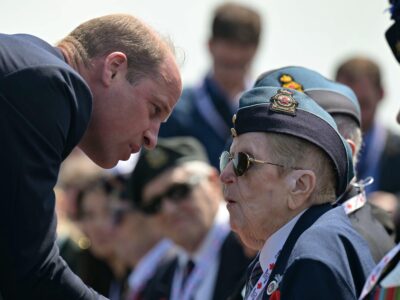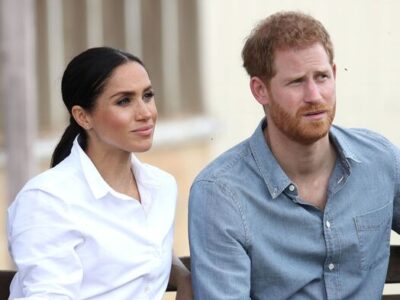King Charles III will be presented with Scotland’s crown jewels in Edinburgh later in a ceremony to mark his Coronation. He will receive the crown and sceptre which form part of the Honours of Scotland. The national thanksgiving service at St Giles’ Cathedral will also feature a new sword named after the late Queen Elizabeth. It echoes an event held in 1953 to celebrate her accession to the throne. Before the service the crown jewels will be brought from Edinburgh Castle to St Giles’ in a procession down the Royal Mile involving about 100 people from various aspects of Scottish life. They will be followed by more than 700 members of the Royal Navy, British Army and Royal Air Force.
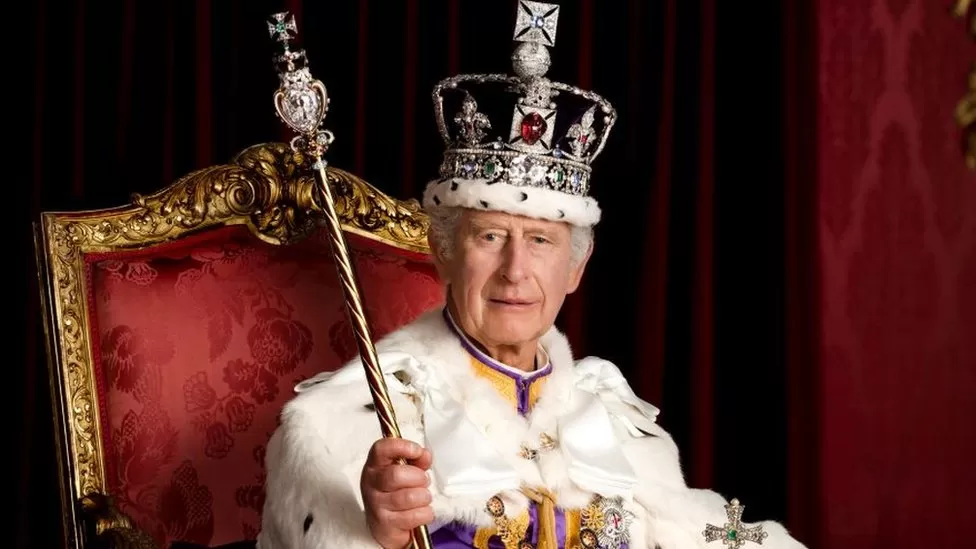
The King and Queen Camilla will leave the Palace of Holyrood house – their official Scottish residence – by car at 14:05 for a separate procession up the Royal Mile to the Kirk. They are expected to be joined by the Prince and Princess of Wales, who are known in Scotland as the Duke and Duchess of Rothesay. Three pipers from King Charles’ former school, Gordonstoun, will play during the final stage of the procession. The Stone of Destiny – which was taken to London for the King’s Coronation at Westminster Abbey in May – has been returned to Edinburgh and will also play a part in the service.
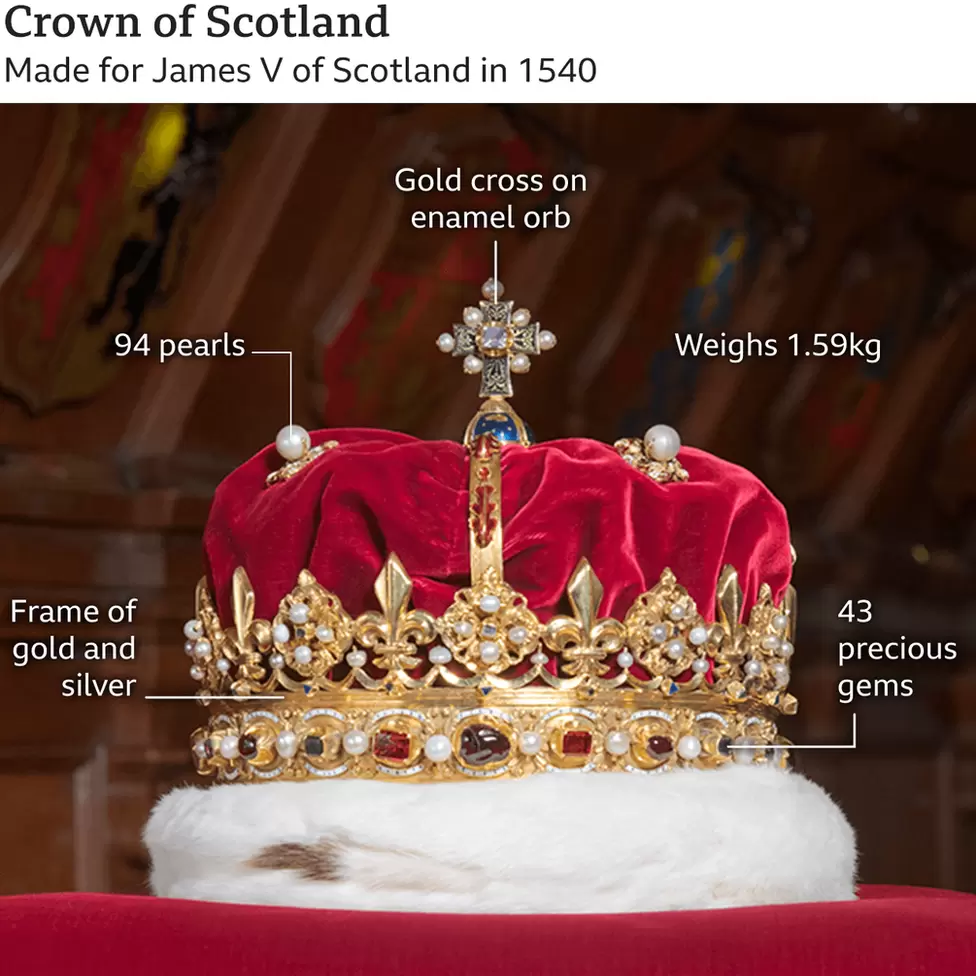
The moderator of the General Assembly of the Church of Scotland, will preach the sermon. The crown jewels will be presented to the King by the Very Reverend Prof David Fergusson, Dean of the Chapel Royal and Dean of the Order of the Thistle. A 21-gun salute will be fired from Edinburgh Castle at about 15:20 before the royal procession travels back to the Palace of Holyrood house. Crowds, which are expected to gather on the streets of the Scottish capital, will then see a fly-past by the Red Arrows.
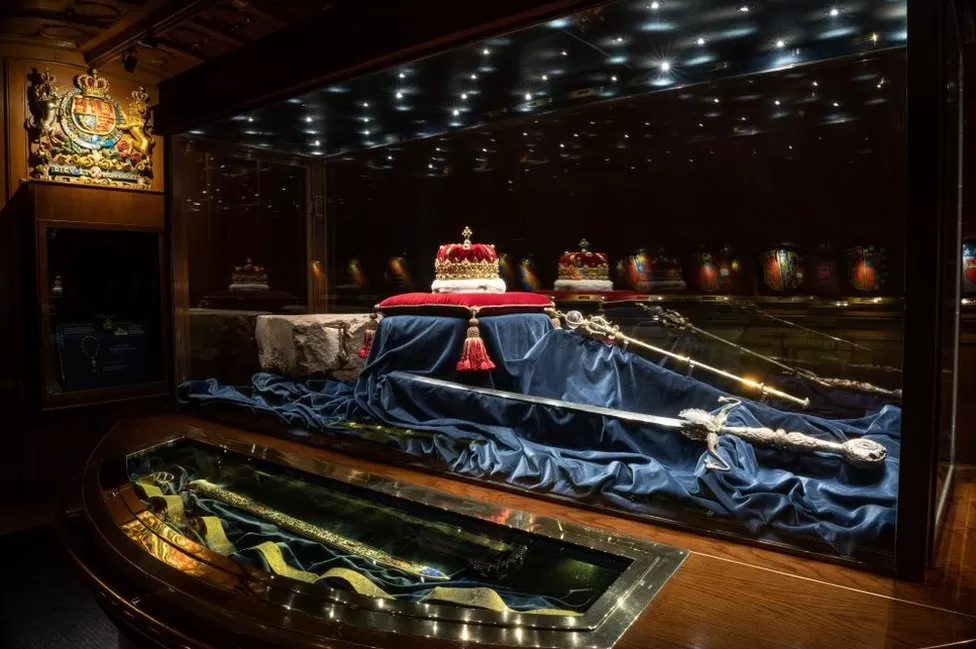
What are the Honours of Scotland?
Made of gold, silver and precious gems, they are the oldest crown jewels in Britain and comprise the priceless crown, sceptre and sword of state. They are items of immense significance and many will remember the Crown of Scotland sitting atop the Queen’s coffin when she lay at rest at St Giles’ Cathedral. The crown was made for James V, who first wore it at the Coronation of Queen Mary of Guise in 1540.
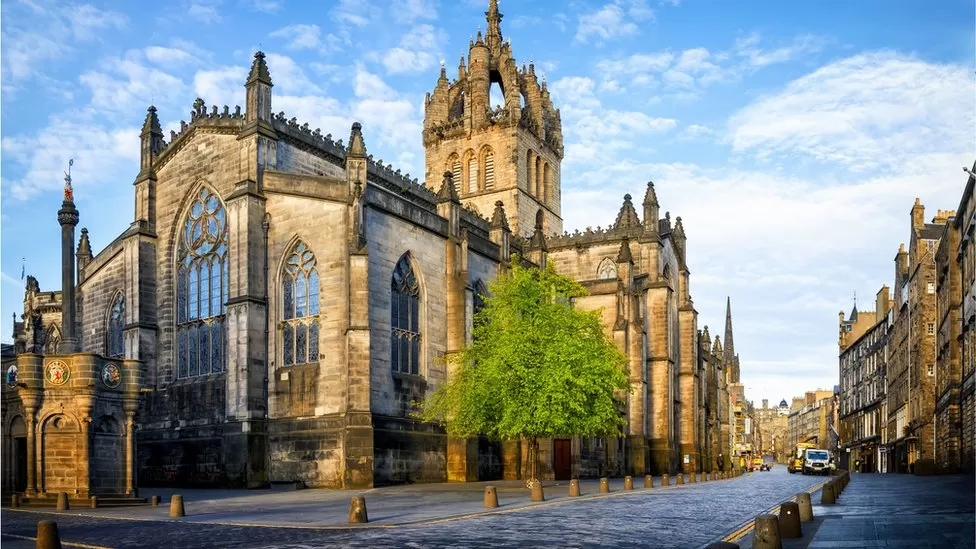
Mary Queen of Scots was the first to be crowned using the new crown and sceptre together, in 1543. The origins of the sceptre are less certain – it may have been a papal gift to James IV. However, the sword King Charles will be presented with is brand new, and commissioned because the existing 16th Century sword is too fragile to handle. Named after his late mother, it is called the Elizabeth sword.
Turbulent past
The Honours have had a turbulent past. They were removed from the castle and hidden in 1651-60 to keep them from Oliver Cromwell’s army. In 1707, following the Act of Union between England and Scotland, they were locked in a chest and sealed away. In 1818, Sir Walter Scott, the famous novelist, rediscovered the Honours – along with a mysterious silver wand. The Honours of Scotland and their accompanying exhibition are located on the first floor of the Royal Palace on the east side of Crown Square at Edinburgh Castle.
![]()


